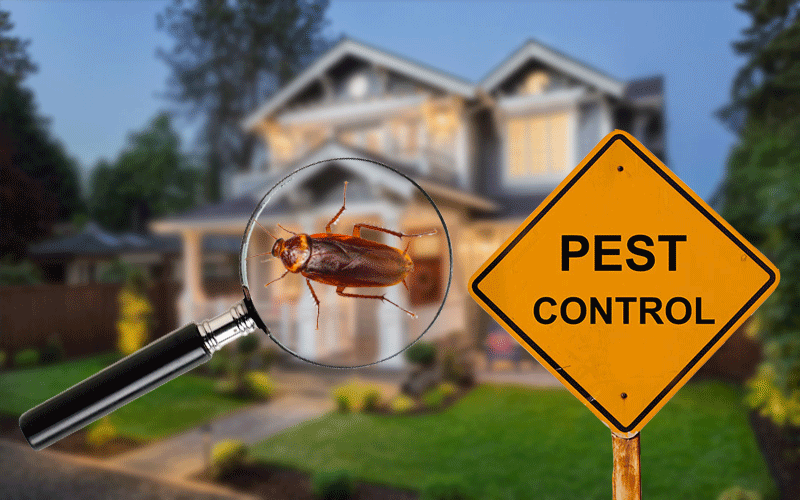A1 Bed Bug Exterminator Charlotte - Specialized Bed Bug Removal
A1 Bed Bug Exterminator Charlotte - Specialized Bed Bug Removal
Blog Article
Bed Pest Treatment Breakdown: Comparing Chemical Vs. Non-Chemical Solutions
In the world of pest control, specifically when handling the relentless issue of bed pests, the choice in between chemical and non-chemical treatment remedies can be a pivotal one. Both strategies supply distinct benefits and drawbacks, affecting factors such as efficiency, safety and security considerations, and total expense. By analyzing the nuanced information of each technique, a clearer understanding of which course to seek in resolving a bed pest problem can be attained.
Performance of Chemical Treatments
Chemical therapies for bed pest invasions have actually been commonly acknowledged for their potent and rapid effectiveness in eliminating these insects. When taking into consideration the performance of chemical treatments, it is vital to understand that they can supply a detailed and fast solution to a bed insect trouble. Specialist pest control experts typically count on pesticides to target bed pests at various phases of their life process, consisting of adults, eggs, and fairies. These chemicals commonly work by disrupting the bed bugs' nerve system, leading to paralysis and eventual fatality.
In addition, chemical therapies have the advantage of supplying recurring results, implying that they can proceed to remove bed bugs also after the initial application. This residual action is especially helpful in combating any kind of prospective re-infestations. In addition, the quick action of chemical therapies can bring alleviation to individuals encountering severe bed pest infestations, allowing them to regain control of their living spaces promptly.
Safety Worry About Chemical Solutions
One essential facet that requires cautious factor to consider when utilizing chemical services for bed insect therapy is ensuring the safety and security of owners and the setting. Direct exposure to particular chemicals utilized in bed bug treatments can lead to respiratory problems, skin irritation, or various other damaging reactions, specifically in individuals with pre-existing problems or level of sensitivities.
Additionally, the environmental influence of chemical options is an additional significant factor to consider. Some pesticides utilized in bed pest therapies might be damaging to advantageous pests, wild animals, and ecological communities if they seep right into the soil or water systems. It is vital to use chemical therapies sensibly, adhering to safety guidelines, and considering much less toxic choices to reduce these risks and make sure the reliable and secure monitoring of bed pest problems.
Advantages of Non-Chemical Techniques
Thinking about the possible safety issues and ecological influence connected with chemical solutions for bed pest treatment, discovering non-chemical methods offers an appealing alternative with several unique benefits. Non-chemical treatments are ecologically pleasant, as they do not contribute to air or water pollution, making them a lasting selection for pest control.
Furthermore, non-chemical services can be efficient in targeting bed insects, including hard-to-reach locations where chemical treatments might not penetrate. Techniques such as warm treatment, vacuuming, heavy steam cleaning, and cushion coverings supply complete obliteration without using unsafe chemicals. Moreover, non-chemical techniques can be much less turbulent, requiring very little preparation and permitting quicker reentry into dealt with locations. Generally, choosing non-chemical bed bug therapy techniques not just prioritizes security and environmental management however additionally makes sure efficient and detailed parasite control.
Limitations of Non-Chemical Treatments

Furthermore, non-chemical treatments frequently need multiple applications to attain effective removal. This can be taxing and may not constantly assure full removal of all bed pests and their eggs, especially in surprise or hard-to-reach places.
In addition, the success of non-chemical therapies heavily depends on correct implementation and thoroughness, which can be challenging for individuals without specialist expertise. Insufficient application of non-chemical methods might result in incomplete elimination, resulting in persistent problems and the requirement for additional therapies.
Consequently, while non-chemical therapies have their benefits, it is important to acknowledge these restrictions and consider them when figuring out the most effective approach for taking care of bed insect infestations.
Cost Contrast: Chemical Vs. Non-Chemical Options
Provided the limitations associated with non-chemical therapies, a vital aspect to evaluate in the context of bed pest management is the price comparison between chemical and non-chemical choices. Chemical therapies usually involve the application of have a peek at this website pesticides by professionals, which can range from $250 to $900 per area, depending upon the severity of the infestation and the size of the area to be treated. In comparison, non-chemical therapies like warm therapy or steam can be extra pricey, with expenses varying from $1,000 to $6,000 for an entire home. While the initial expense of chemical therapies may appear reduced, multiple therapies may be required to fully eradicate the invasion, possibly enhancing the total cost. On the various useful reference other hand, non-chemical choices may offer a much more lasting and eco-friendly option, although they can be cost-prohibitive for some people. Ultimately, when taking into consideration the cost of bed insect treatment alternatives, it is crucial to weigh the in advance costs versus the performance and long-lasting sustainability of the selected method.
Verdict

Thinking about the potential safety and security worries and environmental influence connected with chemical remedies for bed pest treatment, checking out non-chemical strategies offers a promising choice with several unique benefits.Offered the limitations linked with non-chemical therapies, an essential facet to evaluate in the context of bed pest administration is the cost comparison between chemical and non-chemical choices. In comparison, non-chemical therapies like warmth treatment or heavy steam can be more expensive, with prices ranging from $1,000 to $6,000 for a whole home. While the initial cost of chemical therapies might seem lower, several treatments may be required to completely eradicate the infestation, potentially raising the overall cost.In verdict, when comparing chemical and non-chemical bed bug treatment options, it is crucial to think about performance, safety and security, benefits, limitations, and price.
Report this page